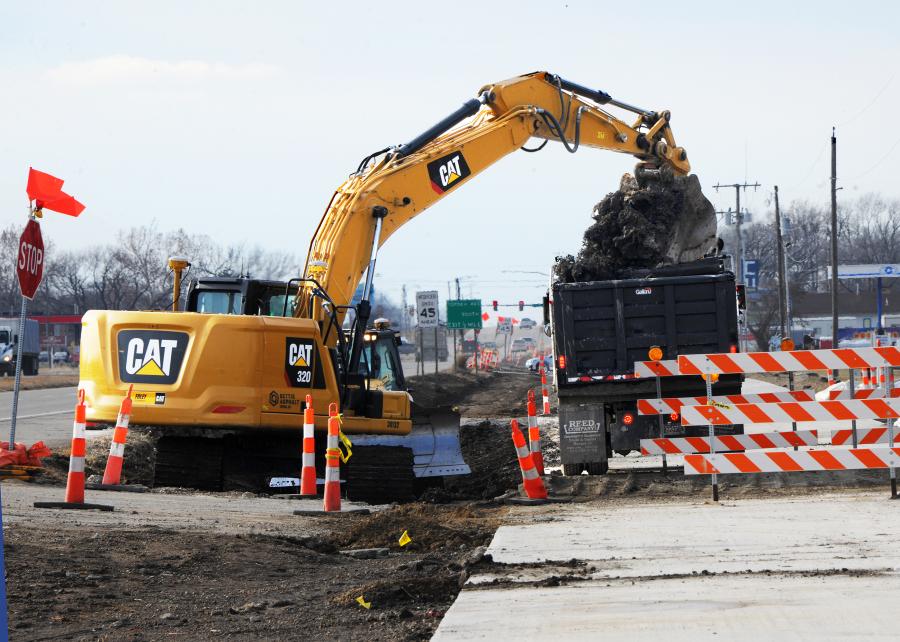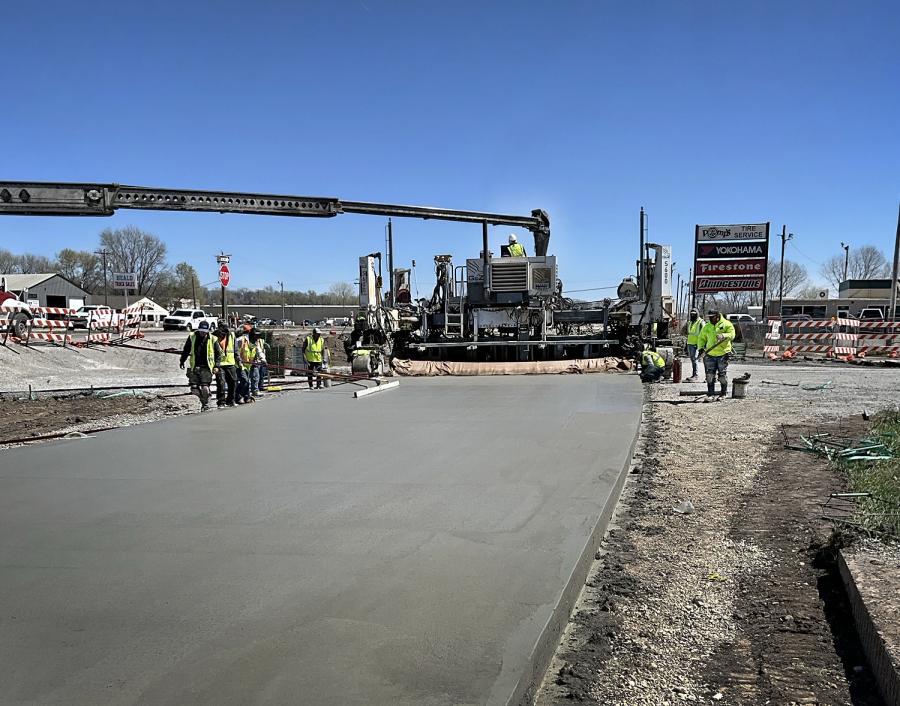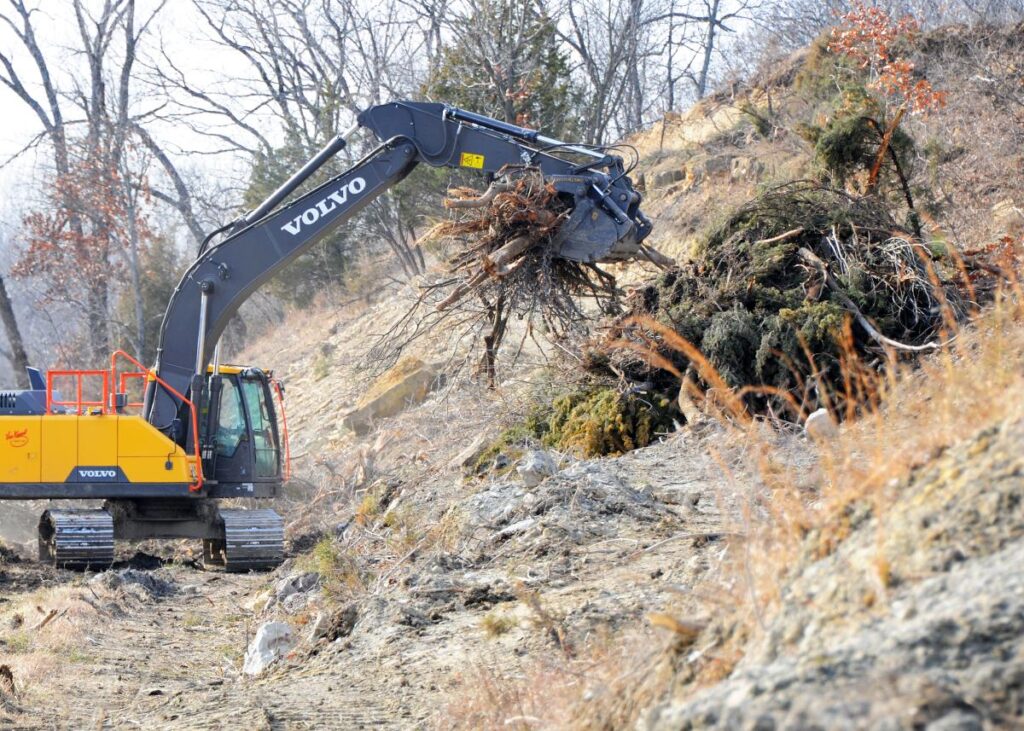Photo courtesy of KDOT
The U.S. 24 improvements project won’t be complete until 2027.
The Kansas Department of Transportation (KDOT) is collaborating with the city of Topeka on a $64 million reconstruction and pavement replacement effort that begins near N. Kansas Avenue and extends to Muddy Creek Jefferson County. The U.S. 24 improvements project won’t be complete until 2027 and is considered long overdue.
“The pavement and bridges along this stretch of U.S. 24 were originally constructed in the 1950s, and are at the end of service life,” said Kate Craft, KDOT northeast Kansas public affairs manager. “In that time, traffic volumes have increased; highway design criteria have evolved; and businesses and residences have developed in the area.

Photo courtesy of KDOT
“Traffic counts from 2022 show this stretch of U.S. 24 has an annual average daily traffic of more than 10,000 motorists. The western/urban portion of the project in north Topeka and Shawnee County is one of the main arterial entrances to the capital city.”
Full-depth pavement reconstruction for this project involves detouring traffic away from the work area; removing the existing asphalt or concrete pavement; making grading and drainage improvements; stabilizing the subgrade with a cement additive; placing a rock base course; paving the new concrete surface and shouldering and striping the new pavement before reopening to traffic.
“From start to finish, this process usually takes only a few months, but on a project like this, when a job must be completed in steps to allow for traffic to continue to pass through, it can take several years,” said Craft.
Work began in July 2023. The undertaking includes complete removal and reconstruction of the eastbound and westbound bridges over Soldier Creek, rehabilitation and overlay of the eastbound and westbound bridge decks over K-4 and complete removal and reconstruction of the eastbound bridge over Muddy Creek.
Two bridges located over abandoned railroad tracks (just east of Goldwater Road) will be removed entirely, and the area of U.S. 24 will be leveled/lowered approximately 15 ft. to help improve sight distance.
Craft noted that the 5.5-mi. project is expected to improve safety, streamline access and enhance economic development opportunities.
“A 2018 traffic study found the crash rate along U.S. 24 between Kansas Avenue and Goldwater Road was six percent higher than statewide comparisons. The fatal crash rate was 150 percent higher. The planned intersection improvements are expected to reduce the conflict points by roughly 70 percent. The median improvements have been designed to maintain access to businesses in the corridor while maintaining traffic flow.
“These improvements, along with the reconstructed frontage roads, could encourage future investments and developments in the area.”
Because of the extensive reconstruction work being performed, the project is being carried out in multiple phases. The schedule also will allow traffic and access to businesses and residents through the corridor to be maintained as much as possible.
Reconstruction of the frontage roads had limited traffic to in/out access only to businesses along the urban corridor. Traffic from U.S. 24 was shifted to the frontage roads via shoo-flies at a reduced speed while the highway and intersections are reconstructed. Later phases on the eastern/rural portion of U.S. 24 will require lane and speed reductions, select ramp closures and detours.
“A few challenges we’ve experienced on this project include moving traffic safely through the active work areas and maintaining access to local business,” said Craft. “Coordinating the large supply of rock and cement for concrete for the several year period the project will take place has also been an issue.”
Reconstruction of the frontage roads and tie-ins is currently under way, as well as construction of the shoo-fly detours and tree removal along the eastern corridor in preparation for later stages. Major clearing and tree removal along U.S. 24 is finished, as well as the reconstruction of the north frontage road along the highway. The south frontage road is expected to be complete by the end of April.

Photo courtesy of Lochner
Just prior to work starting, there were unexpected utility conflicts along the frontage roads that needed to be resolved before construction could begin. KDOT and the contractor worked with the utility companies to relocate the utilities as quickly as possible to reduce further delays.
Craft said Kansas’ varying weather patterns were taken into consideration during the planning process.
“Many projects shut down for the winter months of December through February but continue throughout the rest of the year. While rain and snow can sometimes affect construction, they usually have little to no impact on a project’s completion timeline.”
A fairly large excavation project, the total profile grade of the roadway will change significantly in some areas, which will smooth out and level the existing road. This should ultimately improve visibility for travelers driving along the road and provide a more comfortable and more efficient driving experience.
Approximately 465,000 cu. yds. of dirt are expected to be moved during construction. Routine heavy equipment is being used by crews, along with a Guntert and Zimmerman paver; GOMACO paver; Miller side-draft paver; and a Vögele asphalt paver. Rock for the project is being sourced from Mid-States Materials Plummer Creek Quarry south of Topeka and Mid-States Materials Topeka Sand Plant. The cement is being sourced from Chanute, Kan., from Ash Grove Cement Company.
According to Aaron Norval, estimating engineer of prime contractor Koss Construction, the project is an opportunity to make a lasting contribution.
“Although it’s hard work and a challenging and competitive industry, road construction is a very rewarding career path for those who are seeking to enter into an ongoing legacy of men and women who contribute to our nation’s greatest infrastructure. There’s a lot of pride in the work we do, which is reflected in the quality of the workmanship of our projects. We’re not simply trying to get a project done, but to maintain a history of integrity and quality which precedes us, and which we want to continue for the generations that follow us.” CEG
Read the full article here











